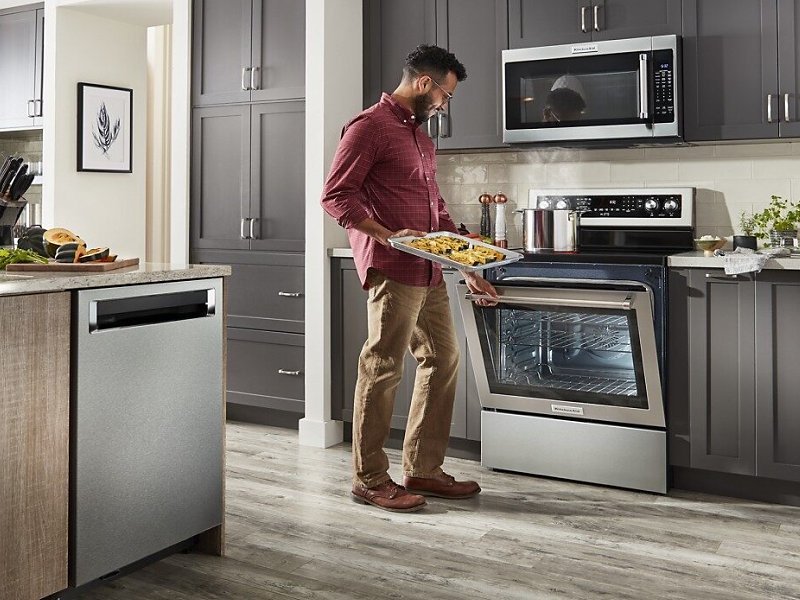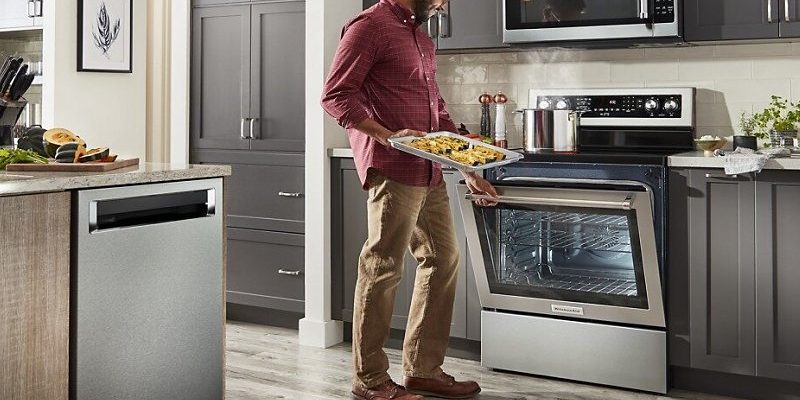
Let me explain. Registering your KitchenAid appliance warranty online is basically signing up for peace of mind. It’s like putting your name on a VIP list that says, “Hey, if this oven acts up, I’m covered.” But in today’s digital world, safety isn’t just about the product; it’s about protecting your personal info too. So, let’s chat about what makes online warranty registration for KitchenAid ovens and ranges safe—or not—and how you can feel confident clicking that submit button.
How Online Warranty Registration Works for KitchenAid Ovens & Ranges
When you buy a KitchenAid oven or range, the warranty usually covers parts and repairs for a set period, often one year or more. To activate this warranty, KitchenAid gives you two options: mail-in registration or online registration. The latter has become the popular choice because it’s fast and easy—you just fill out a form with your product details and contact info on the KitchenAid website.
Behind the scenes, this info goes into KitchenAid’s secure customer database. It links your oven’s unique serial number with your name and address, so if something breaks, you don’t have to prove you own the thing. It’s like registering your phone or laptop; it helps customer service track your purchase history and provide support faster.
Here’s the thing, though: even though the process sounds straightforward, safety depends on how carefully your data is handled. Since you’re sharing sensitive info—think personal address, phone number, maybe even credit card info if you’re purchasing extended warranty—you want to be sure the site is legit and secure.
Is KitchenAid’s Online Registration Website Secure?
For starters, KitchenAid is a major appliance brand owned by Whirlpool, which means they take security seriously. Their official website uses HTTPS encryption, indicated by the little padlock icon in your browser’s address bar. That means data you enter doesn’t travel in plain text, but is coded to keep it safe from hackers during transmission.
Still, it’s not just about encryption. The company’s privacy policy and data protection measures matter too. KitchenAid commits to not sharing your info with sketchy third parties, and they have safeguards like firewalls and intrusion detection systems to protect stored data. Honestly, the brand’s reputation depends on this—it’s not in their interest to let customer info leak.
One practical tip? Always double-check the URL before entering your info. Some scammers create fake websites that look almost exactly like official KitchenAid pages. If the domain looks off, or you get a warning about an insecure connection, that’s a red flag. Staying cautious with even trusted brands helps keep your data safe.
Common Concerns About Online Warranty Registration Safety
You might be wondering what the real risks are when registering online. After all, it’s just a simple form, right? Well, here’s a few things to watch out for:
- Phishing scams: As mentioned, fake emails or websites may trick you into entering personal info on a fraudulent site.
- Data breaches: No company is 100% immune to hacking attempts. If KitchenAid’s systems get compromised, customer info could be at risk.
- Mistakes in data entry: If you enter the wrong serial number or email, your warranty might not be properly registered.
Despite these concerns, the chances of falling victim to scams or breaches when registering directly on KitchenAid’s official site are very low. The bigger risks come if you stray to unofficial sites or share info over unsecured Wi-Fi networks.
How to Safeguard Your Info During Online Registration
Here’s the thing: no system is foolproof, but you can take some easy steps to protect yourself while signing up your KitchenAid oven warranty online. Think of it like locking your front door before leaving the house.
- Use a secure, private internet connection. Avoid public Wi-Fi for registrations, as these can be hotspots for hackers.
- Confirm you’re on the official KitchenAid website. The URL should start with https://www.kitchenaid.com.
- Create strong passwords if the site requires you to make an account, and don’t reuse passwords from other sites.
- Keep your device updated. Security patches on your phone or computer help block vulnerabilities.
- Save a confirmation email or screenshot. This proof is handy if you need warranty service later.
Following these simple steps means you’re not just blindly trusting the website—you’re playing an active role in your own data safety.
Why Online Registration Beats Paper Registration
You might be old-fashioned and think mailing in a paper warranty card is safer because it feels more “real.” But honestly, online registration has some clear advantages. For one, it’s much faster—your warranty is often activated instantly instead of waiting days or weeks for mail to arrive and be processed.
Also, online systems reduce errors. They automatically check product serial numbers and emails, while handwritten cards can get lost or have typos. Plus, KitchenAid’s customer service team can immediately pull up your registration from the database if you need help, rather than hunting for your paper form.
From a security perspective, mailing a card is low-tech but not necessarily safer. Paper can get lost or stolen too, and you might have to include sensitive info like your phone number. So, online registration—with proper security measures—is usually more reliable and efficient.
What Happens After You Register Online?
Once you submit your KitchenAid oven or range warranty info online, you typically get an immediate confirmation email. This email isn’t just a nice touch; it’s proof your appliance is covered and shows you important details like warranty length and service contact info.
Your product’s serial number links to your name in KitchenAid’s system. This means if your oven ever needs troubleshooting, repairs, or replacement parts, customer support can quickly verify your warranty status. It’s like having a digital receipt that saves you from hassle later.
If you decide to reset or pair any remote control functions on your KitchenAid oven (some models include smart features or app syncing), having your warranty registered may even unlock better access to firmware updates or tech support, making the whole experience smoother.
Alternatives to Online Warranty Registration
If you’re still uncomfortable registering online, what other options do you have? As mentioned, the classic approach is mailing in the warranty card included in your product’s packet. It’s simple but slower.
You can also register by phone—calling KitchenAid’s customer service. This method allows you to speak directly with a representative, which some people prefer if they have questions or concerns.
However, these alternatives lack the speed and immediate confirmation that online registration offers. Plus, phone and mail methods still involve sharing sensitive info, so they’re not inherently safer—just different routes to the same goal.
Final Thoughts: Is Online Warranty Registration Safe for KitchenAid Ovens & Ranges?
Honestly, online warranty registration for KitchenAid ovens and ranges is quite safe—*if* you stick to the official website and follow sensible security tips. KitchenAid’s strong brand reputation means they invest in protecting your data, and their encrypted site keeps your info locked down during submission.
You might think, “I’ll just mail it in,” but the reality is that online registration is typically faster, more accurate, and more convenient. Plus, you get instant confirmation and easier access to support later.
Here’s the takeaway: Treat the online registration like you would any sensitive online activity. Double-check the URL, avoid sketchy networks, and keep your records handy. That way, you can relax knowing your shiny new KitchenAid oven is covered—and your personal info isn’t floating around unsecured.
So go ahead, register that warranty online—your oven (and peace of mind) will thank you.
